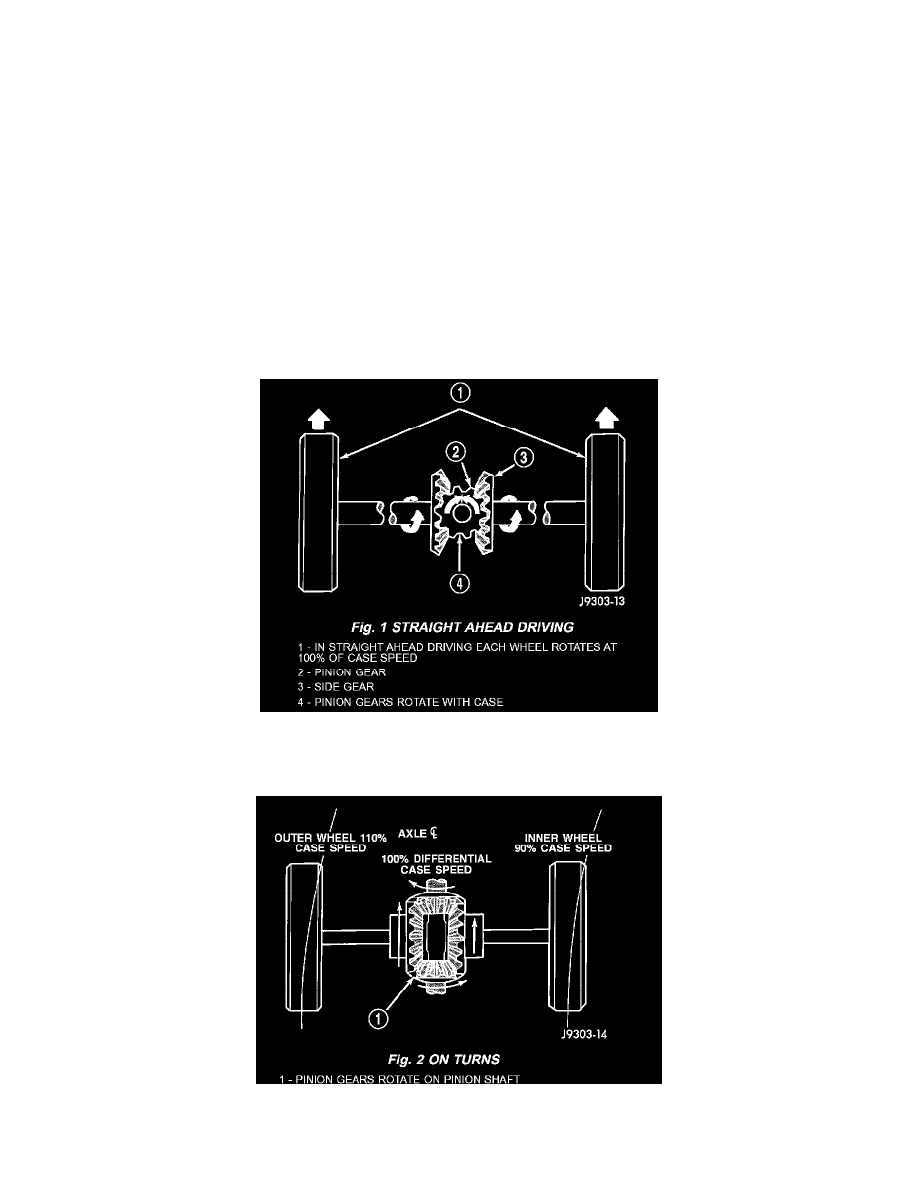RAM 3500 Truck 4WD L6-5.9L DSL Turbo VIN C (2002)

Fluid - Differential: Description and Operation
REAR AXLE 286RBI
DESCRIPTION
The Rear Beam-design Iron (RBI) axle housings consist of an iron center casting (differential housing) with axle shaft tubes extending from either side.
The tubes are pressed into the differential housing and welded. The axles are full floating axle shafts, that are supported by the axle housing tubes. The
full float axle shafts are retained by bolts attached to the hub.
The differential case for the standard differential is a one-piece design. Differential bearing preload and ring gear backlash are adjusted by the use of
shims located between the differential bearing cones and case. Outboard protective spacers are located between the differential bearing cup and housing.
Pinion bearing preload is set and maintained by the use of shims. Pinion height is controlled by a shim pack located under the inner pinion bearing cup.
The differential cover provides a means for inspection and service.
Axles equipped with a Trac-Lok differential are optional. The differential contains two clutch packs, four pinion gears, and a one-piece pinion mate cross
shaft to provide increased torque to the non-slipping wheel in addition to the standard differential components. A Trac-lok differential for the has a
two-piece differential case.
OPERATION
STANDARD DIFFERENTIAL
The axle receives power from the transmission/ transfer case through the rear propeller shaft. The rear propeller shaft is connected to the pinion gear,
which rotates the differential through the gear mesh with the ring gear bolted to the differential case. The engine power is transmitted to the axle shafts
through the pinion mate and side gears. The side gears are splined to the axle shafts.
During straight-ahead driving, the differential pinion gears do not rotate on the pinion mate shaft. This occurs because input torque applied to the gears is
divided and distributed equally between the two side gears. As a result, the pinion gears revolve with the pinion mate shaft but do not rotate around it
(Fig. 1).
When turning corners, the outside wheel must travel a greater distance than the inside wheel to complete a turn. The difference must be compensated for
to prevent the tires from scuffing and skidding through turns. To accomplish this, the differential allows the axle shafts to turn at unequal speeds (Fig. 2).
